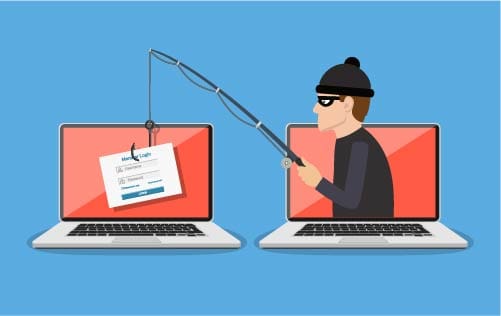Protect Yourself from the Latest Phishing Scams: A Layman’s Guide
In today’s digital age, online scams have become more sophisticated, with phishing scams being one of the most prevalent and dangerous threats, accounting for over 75% of reported cyber incidents globally in 2022. Phishing scams aim to trick unsuspecting individuals into revealing sensitive information such as passwords, credit card details, or personal data. However, with some knowledge and simple precautions, you can protect yourself from falling victim to these deceptive schemes. In this blog post, we will provide you with easy-to-understand tips on how to safeguard yourself from the latest phishing scams.

- Understand what phishing is: Phishing is a method used by cybercriminals to deceive individuals into providing their personal information or clicking on malicious links. Typically, scammers disguise themselves as trustworthy entities like banks, government agencies, or popular websites, creating a sense of urgency to manipulate victims into taking immediate action.
- Be cautious of email and text messages: In 2022, phishing attempts through emails and text messages witnessed a significant 64% increase compared to the previous year. Hackers often use official-looking logos, email addresses, or phone numbers to trick you into thinking the communication is legitimate. Always double-check the sender’s details and scrutinize any messages requesting personal information, financial data, or login credentials.
- Look for suspicious signs: Phishing emails and messages often contain warning signs that can help you identify potential scams. These signs may include misspellings, grammatical errors, generic greetings (e.g., “Dear Customer”), urgent demands, or offers that seem too good to be true. Be wary of such red flags and exercise caution before taking any action.
- Never click on suspicious links: One of the most common phishing tactics is embedding malicious links within emails, messages, or advertisements. Hover your cursor over a link without clicking it to reveal the actual web address. If the URL appears unfamiliar, contains random numbers or characters, or looks suspicious in any way, avoid clicking on it. Instead, manually type the website address into your browser to ensure you reach the legitimate site.
- Be mindful of attachments: Attachments in phishing emails can contain malware that can infect your computer or device. Exercise caution when opening attachments, especially if they come from unknown sources or if you were not expecting them. Avoid downloading files unless you are certain they are safe. If in doubt, contact the sender directly to confirm the legitimacy of the attachment.
- Keep your software up to date: Regularly updating your operating system, web browsers, and antivirus software is crucial for maintaining security. Updates often include important security patches that help safeguard your devices against the latest threats, including phishing scams. Enable automatic updates whenever possible to ensure you stay protected.
- Use strong and unique passwords: A strong password is your first line of defense against phishing attacks. Create passwords that are long, complex, and contain a combination of uppercase and lowercase letters, numbers, and special characters. Avoid using easily guessable information such as your name, birthdate, or common words. Additionally, use different passwords for each online account to minimize the impact if one account is compromised.
- Be cautious on public Wi-Fi networks: When using public Wi-Fi networks, exercise caution as they can be vulnerable to hackers. Avoid accessing sensitive information or conducting financial transactions while connected to public Wi-Fi. If you need to use such networks, consider using a virtual private network (VPN) to encrypt your data and ensure a secure connection.
Protecting yourself from the latest phishing scams is vital in today’s digital landscape. By understanding the basics of phishing, staying vigilant, and following the simple tips mentioned above, you can significantly reduce the risk of falling victim to these deceptive schemes. Remember, always be skeptical, verify the legitimacy of emails and messages, and never disclose your personal information unless you are certain of the source’s authenticity.
Remember, if you’re unsure if a message is real or phishing, our customers can always contact DataTrends Technology IT Helpdesk for expert advice! Ask before you click!

